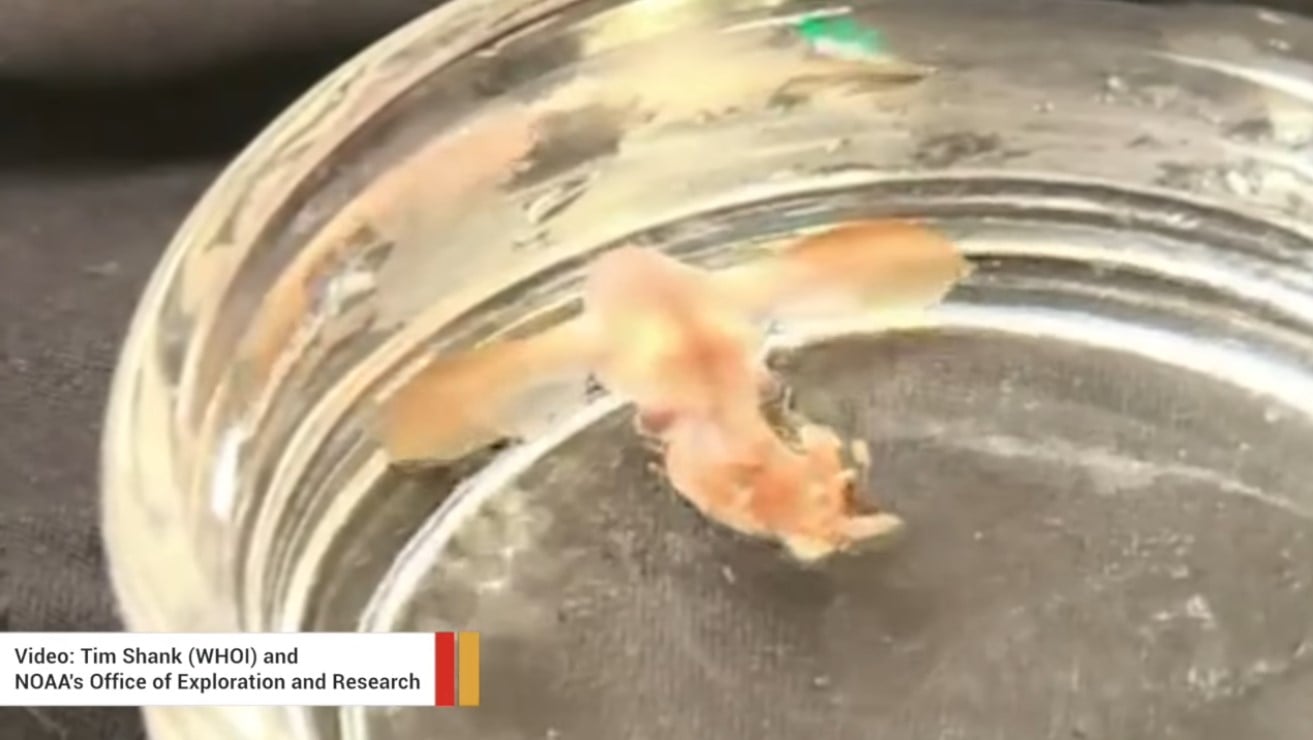In the world’s first footage of a baby dumbo octopus, researchers reveal a newborn baby dumbo octopus, a creature which is one of the world’s strangest marine animals. Capturing this footage helped scientists understand that baby dumbo octopuses are different compared to other “just hatched” creatures, which are in most cases unable to take care of themselves once they are born. The babies are a mini version of an adult dumbo octopus as it has a fully formed body, complex nervous system and is capable of navigating in its surroundings.
Marine biologist, Tim Shank was working on a research cruise east of Cape Cod in 2005. While remotely operating an underwater vehicle to collect coral on the seafloor he noticed a set of small smooth balls tucked deep in the coral.
He decided to collect the small balls and brought them to the surface. Soon after he entered the facility he noticed that one of the balls started opening and he decided to film it. Once the small, tan, golf ball opened, he saw a small baby dumbo octopus.
“With each successive collection, it became apparent that this was some sort of an egg case,” Shank was quoted by Phys.org. “The first few were open and empty, the next two contained a white gelatinous mass within, and the final collection yielded the specimen described in the paper.”
The Dumbo Octopus’ name came from Disney’s animated elephant character called Dumbo, as he was known for his large, floppy ears. The filmed octopus also looks like it has big floppy “ears.” Those “ears” are in fact fins that the animal uses in order to propel itself in the water. On the other hand, other octopus crawl on the seafloor.
This event was the first ever dumbo octopus that was witnessed hatching and later published in a scientific journal. The reason for that is because this species of octopus lives extremely deep in the ocean. Additionally, their eggs are well-hidden in the coral as the research vehicles explore their habitats.
“If an egg is able to be disguised long enough, then it has a better chance of surviving to adulthood without being eaten,” Elizabeth Shea, curator of mollusks at the Delaware Museum of Natural History told Newsweek. Shea is also one of the authors of the paper published in the journal Current Biology.
According to the report in Newsweek, Shank knew that the discovered baby dumbo octopus was important for research as there wouldn’t be many more like it. Shea told Newsweek that she’s not sure how that individual died, but that animals are treated “very gingerly” by the researchers when they kill them for continuation of the study. When the scientists preserved the dead animal, it was further sent to a scientist in Germany who was in charge of performing an MRI on it. Thanks to the MRI, scientists were able to check out the inside of the animal and analyze its anatomy without cutting it open.
“We wanted to make sure that it would be cared for forever, so the next generation of scientists, if they wanted to look at it it would be preserved,” Shea explained to Newsweek. “That’s the great thing about the MRI technology, is that we didn’t have to destroy the specimen to get all this information.”
According to Shea, this rare specimen helped scientists improve their understanding of dumbo octopods. “From a biological perspective, this is kind of connecting the dots in an otherwise somewhat poorly-understood group of organisms,” she said.





